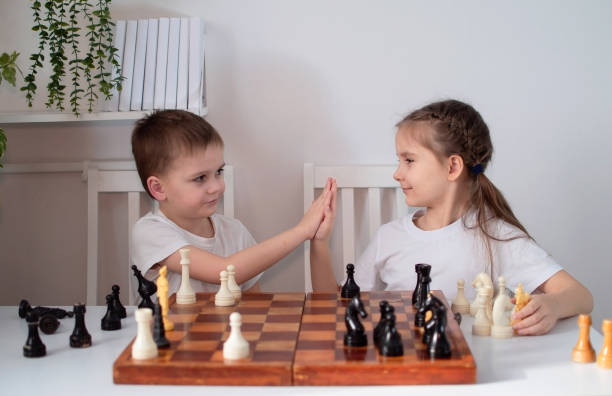When Sibling Fights Turn Physical: Ultimate Guide to Success

Sibling fights can be emotionally draining for parents. This is not a simple argument- He took my stuff, or “She won’t stop saying me!” These spats are part of growing up and life.
We’re talking about finding your kids in the thick of a physical altercation-punching, biting, slapping, or even worse. This is scary for both parents and children. This behavior is quite common, particularly among younger children, who lack the skills to resolve conflicts.
Let’s discuss a strategy for creating a peaceful environment before you throw in the towels (or set up a ring of boxing in your living area).
Prepare to Be Fair
Take a proactive approach and identify what YOU may be doing unknowingly to cause sibling rivalry.
It can be hard to accept, but a lot of the bad behavior we see our children exhibit is caused by what WE, as parents, do. To stop siblings fighting, we need to create an environment that is fair and impartial. Parents can contribute to sibling conflict in many ways without even realizing it. Here are three things that we need to stop doing in order to create an environment of fairness:
Don’t worry if any of these are true for you. Keep reading. There are things you can do today to make a difference. )
1. Avoid Labels
Labels such as ‘the smart one’ and ‘the wild one,’ whether spoken or implied, can lead to sibling fights. If you label one child as a “star athlete,” you can bet his siblings feel less than stellar. If you label another child as a “problem child,” their sister might feel superior.
Labels that are positive and negative can lead to fights between children as they struggle with your comparisons.
Even when labels aren’t spoken out loud, they can still create competition. Take a look at how you interact with your kids. Do you have a “go-to kid”? You can rely on them when you need something done quickly, without fuss, and with no hassle.
Consider how this might affect your siblings. You might think that this would encourage a “what is the point of trying” attitude. Can you imagine how this might make a child feel less competent and promote competition?
Labels can be funny because we think that we’re helping when we give them. We believe that by giving them titles, we are helping them to rise. The truth is that crowns are a burden to the child who wears them and a catalyst for competition for those without.
2. Do not reinforce “victim” and “aggressor” roles
We often play the roles of detectives and referees as parents. As a detective, we must identify both the “victim” and the “aggressor” of the conflict.
We take on the role of judge once we have seen enough. Then things can go awry. We comfort the “victims” with kind words and hugs and send the “aggressors” back to their rooms with a strong reprimand.
When we show sympathy to the “victim,” we are sending a message that the person who is the weaker party in an argument will be given more attention.
This, of course, sets in motion a series of repeat performances, with perhaps even more drama. The “aggressor,” on the other hand, is told that it’s okay to be the bully. And that behavior will also be repeated.
3. Do not exaggerate the size of things
We are the parents. The adults. The calm before the storm. This is something we should strive for and the behavior that we should model.
By exaggerating, we increase drama and attention. Kids will then recreate the chaos.
For example, when we flip our lid over a favorite toy tussle or lose every ounce of our sanity when the siblings stage WWIII on a road trip, we relinquish our “adult-in-the-situation” title. Understandably, these situations are frustrating, but we shouldn’t make a mountain out of molehills. You’ll have enough parenting challenges to face without getting too worked up over the little things.
How to Create an Environment Free of Violence
Here are some strategies that can help you create a peaceful environment. When children’s needs for belonging and importance aren’t satisfied, drama and rivalry can quickly escalate.
Reduce the likelihood of fights by following these three steps:
1. Fill Your Children’s Attention Bin Daily
Provide positive attention daily. Spend time every day getting into their world, building emotional connections, and calming the child’s urges to lash out. This means a separate time for every child, where you give them your full attention.
This tool is called “Mind, Body, and Soul Time.” It can be used to curb all kinds of bad behavior.
In reality, proactive parenting is more effective than reactive.
Many mainstream parenting experts and blogs teach ways to respond after the misbehavior has occurred. Time out. Rewards. Counting up to three. You’ve probably already tried them all.
It’s best to stop sibling rivalry before it starts (and any other parenting issue, for that matter). Filling their attention baskets every day is crucial. Spending 10 minutes with each child doing something they choose will eliminate the desire for them to get your attention through negative means.
2. Make sure your kids are well-rested
If they have slept enough, kids are more likely than not to be able to control their impulses. Just like us all, right? Don’t skip rest or nap time. The time is needed for the kids to refocus both mentally and physically. You can reduce the likelihood of fights by reducing their impulsiveness.
3. Encourage Positive Attributes
Instead of labeling them, focus on their positive qualities. You can empower your children by encouraging them to put in more effort than their natural abilities or talents.
Instead of ‘he is the athletic one,’ you can say, ‘he has been working hard to improve his tennis stroke.’
If parents encourage effort in their children, they will work harder. Children are motivated to work harder when they understand that the action is more important than the result. Here’s my list of favorite encouraging phrases.
Keep calm and carry on.
If your child’s disagreement turns into physical aggression, use these tried-and-true techniques to diffuse the situation and create teaching moments.
1. Stay Out As Long As You Can
Stay out of your children’s fights, at least until they become physical.
Avoid playing referee if it is a simple name-calling situation or if mild frustrations are expressed. Instead, walk into another room. This will remove the attention your child is seeking and allow them to solve the conflict themselves.
You may have asked a caregiver, “Really?” My kids? Your children may be using sibling rivalry to gain attention. You’d be surprised at how many fights are stopped without a single punch being thrown when you take away your attention.
Please implement these strategies if the fight escalates and turns from a simple dispute into a WWE wrestling match.
2. Stay Calm and Help Your Children Do the Same
Stay calm, and don’t get upset when you see your children fighting. It’s frightening for your kids when you raise your voice and get angry. This only intensifies the power struggle.
You will receive an avalanche of complaints and accusations from your siblings if you raise your voice during a fight.
It’s difficult to resist taking the role of judge once the accusations begin flying. You can enter the fray calmly and without judgment by making a statement that is not judgmental. For example, “Wow, you seem to be having trouble getting along.”
You can separate children into different areas if necessary and tell them, “I know everyone is frustrated.” We need to calm down .”
Your energy sets the mood in this room. Be calm and undisturbed, and you won’t receive the attention your children are looking for at the moment.
3. Check to See if Everyone is Safe
After the dust settles, check your children for any wounds. You should calmly obtain a bandage or ice pack without blaming either party.
You’ll be surprised at how calmly children will respond to bipartisan medical treatment. The child who used to be “the victim” won’t be impressed with your lack of over-empathy, while the child who was “the aggressor” will feel less empowered by the “bully” role.
After you have ensured that everyone is safe in the home, you should bring down the energy level. Get everyone a drink of water, give them a snack, play some relaxing music, let them hug their favorite stuffed animals, and breathe deeply. You can de-escalate a situation quickly and effectively.
Please note: If you are a member of Positive Parenting Solutions, please see Lessons #37 to 44 in Step 5. This will give you all the tools to help resolve sibling rivalry problems at home.
After the fight: Don’t take sides.
When the fight has ended, and no more punches are being thrown, now is the time to learn some conflict resolution techniques.
Do not move on to these steps until everyone has calmed down. Otherwise, you could find that another fight thwarts your efforts.
If you have entered into sibling disputes with a lot of energy and aggression in the past, practicing to do so calmly will be necessary. You will see your children become irritated the first couple of times. If you want to achieve results, you must stay on course and use these tools consistently.
1. Sportscast A Solution
He doesn’t give a judgment, assign blame, or make a decision. He uses phrases such as “I hear you saying that it made you sad to see your brother take the toy away from you.” or “I can tell you felt annoyed because your sister repeated what you said.”
When children are encouraged to use the “I feel …” statements (I feel sad when …, I feel hurt when …, I feel frustrated when …-), they learn how to state the facts simply and express their feelings.
It’s almost impossible to find a solution when sibling disputes turn into a blame game. When children express their feelings, it’s impossible to argue. You can’t say, “No, I didn’t feel like that.”
As you’re sportscasting, remain bipartisan. Let the children express their frustrations without blaming anyone. Just moderate the conversation. Take a break if the discussion gets heated. Come back later to calmly discuss it.
2. Practice the Re-do.
After everyone has expressed their emotions, help your kids figure out what they can do differently the next time. Then, practice it. Your children will learn how to handle their feelings better in the future.
It takes time to develop new skills and habits.
Role-playing with stuffed animals is a great way to get younger children involved. Encourage your child’s practice of what she should do when frustrated – walk away, ask for assistance, express her feelings with words, etc.
Kids can detach themselves from the situation by using stuffed animals. They will see the other side of the story.
Role-playing is a great way to engage older children. It’s also fun when parents pretend to be their kids. Children will learn to resolve disputes better when they see how their behavior appears from the outside.
It won’t be possible to master these strategies overnight, but by practicing them often and early, you will get better at it.
3. Model Peaceful Communication.
Children are less likely to be aggressive with each other if their home environment is respectful. If you teach your children to be respectful and kind, the stress levels that lead to aggression will drop.
Recognize your child’s ability to control their anger without hitting. Mention it – “You kept your emotions under control when you got frustrated with your brother.” I know it wasn’t easy. You’re growing up !”
It won’t come easy at first, but, as I say, practice makes progress. And progress brings more peace to your home.
If you are a member of Positive Parenting Solutions, please see the advanced module about Sibling Bullying for more information on how to stop physical fights between siblings.
Final Thoughts
Sibling fights can be frustrating and scary, making parents wonder whether they will ever get along.
I would love to give you a step-by-step roadmap that will help you reduce the anxiety, stress, and fear associated with sibling fights.
I have been a parenting educator for at least 15 years. I have helped tens of thousands of families resolve this issue. This is a very frustrating issue for families. I have dedicated an entire step of the course to this topic.
It would be great if I could tell you everything about sibling quarrels and fights in one article. But there’s so much more to learn (which is why I have to spend over three hours teaching parents how to deal with the problems).













